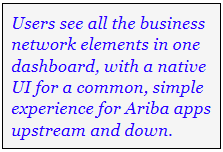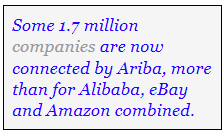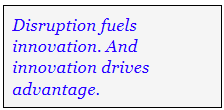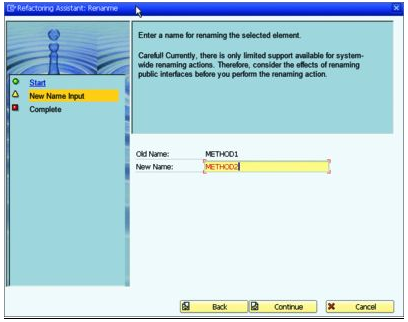Ariba Elevates the Business User Experience

TAKE NOTE (Insights into SAP solutions and Emerging Technology)
Ariba today announced innovations to its cloud-based applications and global business network designed to deliver a personal, contextual and increasingly mobile-first user experience for business applications consumers.
Among the announcements are a newly designed user interface (UI) and a mobile app based on the SAP Fiori approach, both due to be available this summer, for Ariba’s core procurement, spend management, and other line of business apps. Ariba, an SAP company, made the announcements here at the Ariba LIVE onference in Las Vegas.
“This gives us a cleaner approach, more tiles, and a Fiori-like user experience,” said — Chris Haydon, Ariba Senior Vice President of Product Management. “Users see all the business network elements in one dashboard, with a native UI for a common, simple experience for Ariba apps upstream and down.”
The new UI offers an intuitive experience that simplifies task and process execution for all users – from frontline requisitioners to strategic sourcing professionals, said Ariba. [Disclosure: Ariba is a sponsor of BriefingsDirect odcasts.]
The goal is to make the business users want to conduct their B2B processes and transactions  using these new interfaces and experiences, in effect having them demand them of their employers. User-driven productivity is therefore a new go-to market for Ariba, with simplicity and everywhere-enabled interactions with processes a growing differentiator.
using these new interfaces and experiences, in effect having them demand them of their employers. User-driven productivity is therefore a new go-to market for Ariba, with simplicity and everywhere-enabled interactions with processes a growing differentiator.
“We want to make it easier to use the central procurement department, rather than to go around it,” said Cirque du Soleil Supply Chain Senior Director Nadia Malek. Ariba Sourcing, she said, helps Montreal-based Cirque standardize to keep all of its many shows going around the world. And by having all the Ariba apps funnel into SAP, they can keep costs managed, on a ay-as-you-go basis and still keep all the end users’ needs met and controlled.
In another nod to consumer-level ease in business, B2B enterprise buying on Ariba increasingly looks like an Amazon consumer online shopping experience, with one-click to procure from approved catalogs of items from approved suppliers. Search-driven navigation also makes the experience powerful while simple, said Haydon.
Behind the pretty pictures is an increasingly powerful network and platform, built on SAP HANA. Network- centric and activity-context-aware apps allow Ariba to simplify processes across the cloud, on-premises, and partner ecosystem continuum for its global users. The interface serves up only what the users need at that time, and is context aware to the user’s role and needs.
“The future of commerce means processes across multiple business networks, on any device, with shared insights by all,” said Tim Minahan, Senior Vice President at Ariba.
Scale and reach
The Ariba Network supports these apps and services in new terms of scale and reach as well. Every minute the Ariba Network adds a new supplier, and every day, it fields 1.5 million catalog searches while generating $1.8 billion in commerce, said Ariba.
“Business strong, consumer simple” is the concept guiding Ariba’s user experience development, said new incoming Ariba President Alex Atzberger. And SAP is increasingly focusing on far-reaching processes among and between companies to better control total spend and innovate around the analytics of such activities, he said. 
Some 1.7 million companies are now connected by Ariba, more than for Alibaba, eBay and Amazon combined, said Atzberger.
Ariba is also in the process of integrating with SAP HANA and other recent SAP acquisitions, including Concur and Fieldglass. Haydon emphasized that Ariba is striving to make those integrations invisible to users.
“Ariba is leveraging SAP HANA to integrate Concur, S4HANA, and Fieldglass, with no middleware needed,” said Haydon.
The scale and sophistication of the Network and its data is also enabling new levels of automated risk management to Ariba and SAP users. The Hackett Group says more than half of the companies surveyed recently see reducing supply risk as a key initiative.
The scale and sophistication of the Network and its data is also enabling new levels of automated risk management to Ariba and SAP users. ata-driven risk management is increasingly being embedded across supply chain and procurement apps and processes, says Ariba. Now, the risk of businesses having forced labor or other illegal labor practices inside their supply chain is being uncovered.
Made in a Free World
Also at the conference here, Ariba announced a alliance with San Francisco-based non-profit Made in a Free World to help eliminate modern day slavery from the supply chain. Ariba has donated part of the Ariba LIVE registrations to help fund further development of Made in a Free World’s supply chain risk analysis tool, which improve a business’s visibility of their supply chain.
Also at Ariba LIVE, the company presented T-Mobile with its 2015 Network Innovation Award. T-Mobile was an early adopter of Ariba Pay, a cloud-based solution designed to digitize the “pay” in “procedure-to- pay.” Prior to Ariba Pay, the payment process was largely paper based, making it costly and inefficient.
“Emerging payment technologies are certainly disruptive,” said Atzberger. “But as T-Mobile proves, disruption fuels innovation. And innovation drives advantage. And for this, we are pleased to recognize the company with the 2015 Network Innovation Award.”
But the mobile enablement and so-called “total user experience” mprovements seemed the most welcomed by the audience. The experience factor may well prove to be where Ariba and SAP can outpace their competitors and fundamentally change how enterprises use business services.
For example, for all Ariba users — from technicians on the plant floor to sales people in client meetings — the company now provides a mobile app, Ariba Mobile, which is available from the Apple App Store or Google Play. With the app, users can quickly and easily view, track, and act on requisitions from their mobile devices, ransforming the speed and efficiency with which work gets done. Ariba’s approach is not just about replicating existing user interactions onto mobile devices, but providing continuity between desktop interactions and working outside the office.
Easy access
“The Ariba Mobile app provides our requisition approvers with easy access to requisitions anywhere, anytime and gives them the information they need to make spend decisions while keeping up with global demand,” said Alice Hillary, P2P Enablement Lead at John Wiley and Sons. “Using the app, approvers can view their requests in a sleek interface and access details in an easier-to-read format than general emails. The feature has also helped us to ddress security concerns with approvals done through email.”
And as part of planned innovations, Ariba will provide access to templates, best practices, videos and more within many of its applications, beginning with its Seller solutions. Users will also be able tap directly into the Ariba xchange Community, enabling collaboration within the context of their apps with professionals who have the expertise, experience, and knowledge to help them execute a process such as responding to an RFP or creating an auction.
This story originally appeared on Dana Gradner’s BriefingsDirect.
UNDER DEVELOPMENT(Information for ABAP Developers)
ABAP Dynamic Programming Techniques
OK, lets pick up from last month where I promised we would look at how to create a Dynamic Where clause for our OPEN SQL. Before we start diving into this, I want to give you a little context about “Tokens”. No No, not the kind you use for the subway! What are Tokens in ABAP? Lets go right to the help for an ABAP Tutorial!
ABAP Statements
ABAP statements consist of the following tokens and end with a period (.).
– ABAP words
– Operands
– Operators
Certain ABAP words, operands and operators form
– expressions,
which can be specified at certain operand positions.
The tokens of a statement must be separated by at least one blank or a line break. Otherwise, blanks and line breaks between tokens are not significant. An ABAP statement is not restricted to a line in the source text.
No distinction is made between upper and lowercase letters. Apart from ABAP words, operands and operators, you can also use the following special characters:
– If a number of expressions of the same type with operators are linked to an expression, the priority of the individual operations can be defined usig round brackets (()).
– For the purpose of calling functions and methods, round brackets (()) can sometimes be used.
– Lists of operands are expressed by round brackets (()) and commas (,) in certain positions.
– When forming a chained statement, a colon (:) and commas (,) can be used.
A number of free-standing special characters, such as round brackets for setting the priority, need to be separated from other tokens by an empty character. Other special characters – as well as the period at the end – do not have to be separated by an empty character.
Example
ABAP statement with the keyword DELETE, the addition WHERE, the operators =, <, >, AND, OR, the operands itab, col1, op1, col2, op2, col3, op3and round brackets.
DELETE itab WHERE ( col1 = op1 AND ( col2 > op2 OR col3 < op3 ) ).
Now that we understand what a Token is, we can see the WHERE Clause has tokens in it, but so do other ABAP statements. So instead of focusing on just a Dynamic Where Clause, let broaden the discussion to DYNAMIC TOKENS in ABAP.
Q&A (Your Questions answered)
Q. I have a real problem. I want to change the name of a method in a global class. My lead’s head is going to explode as he keep saying that we have take into consideration all of the method calls pointing to this method to prevent possible errors due to the renaming. That could take days or weeks. I can’t believe there isn’t a SAP answer for this! Help!


